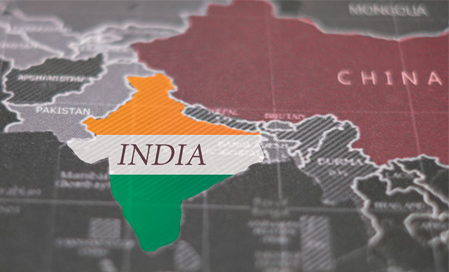El comercio del opio angloíndio del siglo diecinueve con China y su legado duradero
Main Article Content
Keywords
Guerras del opio, Historia anglo-india, comercio mercantil, siglo XIX, efectos y resultados sociopolíticos
Resumen
En los últimos años, dos problemas aparentemente diferentes e inconexos han recibido una atención reiterada de los medios de comunicación en todo el mundo, siendo estos, la crisis de los opioides y el movimiento pro democracia en Hong Kong. La crisis de los opioides, que es especialmente catastrófica en los Estados Unidos, implica la prescripción excesiva y el abuso de analgésicos opioides sintéticos como el oxycontin y el fentanilo (Felter, 2020). El movimiento a favor de la democracia en Hong Kong involucra a legiones de manifestantes, muchos de ellos estudiantes universitarios, que toman las calles contra lo que ven como la erosión de sus libertades civiles a manos del gobierno de China continental (Perper, 2019). ¿Cómo se pueden conectar estos dos problemas? Este artículo cuenta la historia de cómo ocurrió la primera gran crisis de opioides en la China del siglo XIX, y cómo los británicos del narcotráfico frustraron los intentos del gobierno chino de detener las importaciones de drogas, librando dos guerras en el proceso. Al concluir la primera de estas guerras, China se vio obligada a ceder el territorio de Hong Kong. Este puesto de avanzada colonial británico se convirtió en el principal centro de entrada del opio británico en el mercado chino. Durante el siglo y medio siguiente, Hong Kong se convirtió en una de las ciudades comerciales más dinámicas del mundo, y sus ciudadanos disfrutaron de libertades bajo el dominio británico que no estaban disponibles para la población de China continental. Por lo tanto, el legado de las guerras del opio y el comercio británico de opio a China todavía está muy presente en la actualidad.
Descargas
Referencias
Bauer, Rolf. (2019). The peasant production of opium in Nineteenth-century India. Leiden; Boston: Brill
Berenguer-López, F. (2018). The Blunders in the Western cross-cutting policies in Afghanistan: The Opium economy as a case of study. UNISCI Discussion Papers. 47. 10.31439/UNISCI-8.
Brown, R. H. (2002). The Opium Trade and Opium Policies in India, China, Britain, and the United States: Historical Comparisons and Theoretical Interpretations. Asian Journal of Social Science, 30(3), 623. https://doi.org/10.1163/156853102320945420
Byrd, W., & Ward, C. (2021). DRUGS AND DEVELOPMENT IN AFGHANISTAN [Ebook]. Retrieved from http://documents1.worldbank.org/curated/en/156391468740439773/pdf/30903.pdf
Chalk, P. (2000) Southeast Asia and the Golden Triangle's Heroin Trade: Threat and Response, Studies in Conflict & Terrorism, 23:2, 89-106, DOI: 10.1080/105761000265548
Chandra, Siddharth (2008). “Economic Histories of the Opium Trade”. EH.Net Encyclopedia, edited by Robert Whaples. http://eh.net/encyclopedia/economic-histories-of-the-opium-trade/
Chang, Hsin-pao. (1970). Commissioner Lin and the Opium War. New York: W.W. Norton
Chiculture (n.d.) The Treaty of Nanking and its Aftermath https://chiculture.org.hk/en/photo-story/112
Deming, S. (2011). The Economic Importance of Indian Opium and Trade with China on Britain's Economy, 1843-1890. Economics Working Paper, 25(1), 4. https://www.whitman.edu/economics/Workingpapers/content/WP_25.pdf.
Derks, H. (2012). TEA FOR OPIUM VICE VERSA. In History of the Opium Problem: The Assault on the East, ca. 1600-1950 (pp. 49-86). LEIDEN; BOSTON: Brill. doi:10.1163/j.ctv4cbhdf.11
Farooqui, A. (2016). The Global Career of Indian Opium and Local Destinies. Almanack, 23, 52–73. https://doi.org/10.1590/2236-463320192216
Feige, C., & Miron, J. (2008). The opium wars, opium legalization and opium consumption in China. Applied Economics Letters, 15(12), 911–913. https://doi.org/10.1080/13504850600972295
Felter, C. (2020). The U.S. Opioid Epidemic. Retrieved 24 March 2021, from https://www.cfr.org/backgrounder/us-opioid-epidemic
International Research: Investigación de Mercado en Hong Kong (n.d.) https://www.sisinternational.com/investigacion-de-mercado-en-hong-kong/
Issue brief: Reports of increases in opioid- and other drug-related overdose and other concerns during COVID pandemic. (2021). Retrieved 21 March 2021, from https://www.ama-assn.org/system/files/2020-12/issue-brief-increases-in-opioid-related-overdose.pdf
Kalipci, M. (2018). Economic Effects of the Opium Wars for Imperial China: The Downfall of an Empire. Abant Izzet Baysal University Journal of Social Sciences / Sosyal Bilimler Enstitüsü Dergisi, 18(3), 291-304.
Lacroix, Xavier (2020). Unequal Treaties with China. Encyclopédie d’histoire numérique de l’Europe, ISSN 2677-6588. https://ehne.fr/fr/node/12502
Little, B. (2019). How Hong Kong Came Under 'One Country, Two Systems' Rule. Retrieved 21 March 2021, from https://www.history.com/news/hong-kong-china-great-britain
Madancy, J. (2001). Unearthing Popular Attitudes toward the Opium Trade and Opium Suppression in Late Qing and Early Republican Fujian. Modern China, 27(4), 436-483. http://www.jstor.org/stable/3181326
McCoy, A. W. (2000). From Free Trade to Prohibition: A Critical History of the Modern Asian Opium Trade. Fordham Urban Law Journal, 28(1), 307–350.
Opiate Addition Resource: Opium Dens Images (2019) https://www.opiateaddictionresource.com/media/images/opium_dens/
Paulès, X. (2008). Anti-Opium Visual Propaganda and the Deglamorisation of Opium in China, 1895—1937. European Journal of East Asian Studies, 7(2), 229-262. http://www.jstor.org/stable/23615404
Paulès, X. (2009). Opium in the City: A Spatial Study of Guangzhou's Opium Houses, 1923-1936. Modern China, 35(5), 495-526. http://www.jstor.org/stable/27746934
Perper, R. (2019). Behind the barricades: Hong Kong protesters share what happened during the violent clashes with police on university campuses. Retrieved 24 March 2021, from https://www.insider.com/timeline-hong-kong-chinese-polytechnic-university-riot-police-pictures-interviews-2019-11
Rastogi, N., & Trivedi, M. (2021). PESTLE TECHNIQUE – A TOOL TO IDENTIFY EXTERNAL RISKS IN CONSTRUCTION PROJECTS [Ebook]. Gwalior. Retrieved from https://www.irjet.net/archives/V3/i1/IRJET-V3I165.pdf
Richards, J. (2002). Opium and the British Indian Empire: The Royal Commission of 1895. Modern Asian Studies, 36(2), 375-420. http://www.jstor.org/stable/3876660
Rush, J. (1985). Opium in Java: A Sinister Friend. The Journal of Asian Studies, 44(3), 549-560. doi:10.2307/2056267
Terry, C. (1931). The Development and Causes of Opium Addiction as a Social Problem. The Journal of Educational Sociology, 4(6), 335-346. doi:10.2307/2961615
UKEssays. (May 2020). What Was the Role of the Opium War in the Fall of the Qing Dynasty?. https://www.ukessays.com/essays/history/what-was-the-role-of-the-opium-war-in-the-fall-of-the-qing-dynasty.php?vref=1
United States Drug Enforcement Administration. (2020). Fentanyl - Drug Fact Sheet [Ebook]. Retrieved from https://www.dea.gov/documents/2020/06/05/fentanyl-drug-fact-sheet
United States Drug Enforcement Administration. (2020). Oxycodone - Drug Fact Sheet [Ebook]. Retrieved from https://www.dea.gov/sites/default/files/2020-06/Oxycodone-2020.pdf
Yangwen, Z. (2005). The Social Life of Opium in China. Cambridge: Cambridge University Press. doi:10.1017/CBO9780511819575

